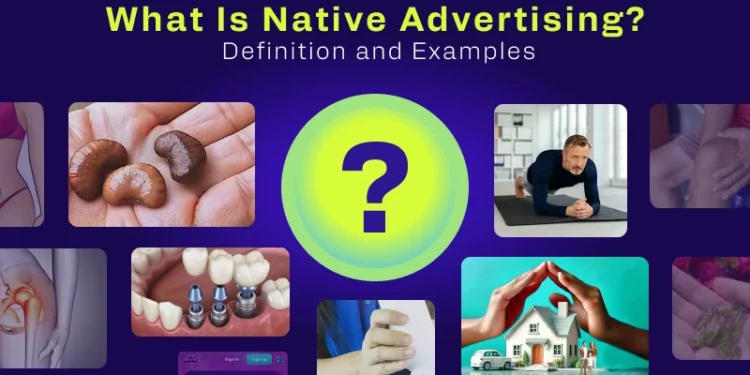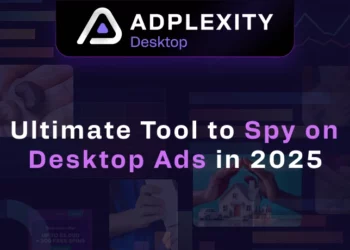Did you know native ads get 53% more attention than traditional display ads and drive 18% greater purchases?
With consumers growing increasingly skilled at ignoring traditional ads, native advertising has become an incredibly effective answer that stops people in their tracks without shocking the user experience.
Throughout this entire guide, we will explore what native advertising is, why it works, and how to use it effectively with actionable examples that work.
What is Native Advertising? A Clear Definition
Native advertising is paid content that matches the form, function, and feel of the platform on which it appears. Unlike traditional banner ads or pop-ups interrupting the user experience, native ads blend seamlessly with surrounding content, creating a non-disruptive yet effective way to engage audiences.
“Native advertising is the art of creating brand messages that feel so cohesive with the user experience that the audience perceives them as belonging there.” – Quoted by an industry veteran
Traditional Advertising and Native Advertising
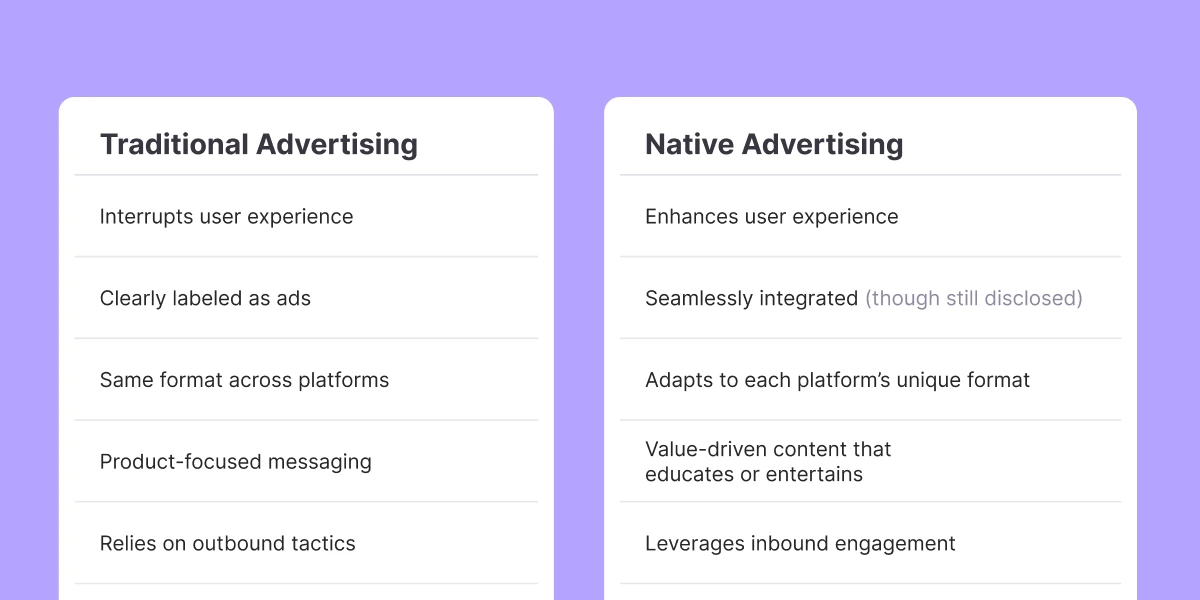
Why Native Advertising Works: The Psychology Behind It
The success of native advertising lies in several reasons:
- Reduced Banner Blindness: 86% of shoppers are afflicted by “banner blindness” – skipping over anything resembling a conventional advertisement. Native advertising bypasses this defense mechanism by looking organic in nature.
- Increased Trust: Presented by known publishers, native advertisements ride along with the “halo effect” of site reputation, with 70% of online shoppers wanting to know about products from the context of content instead of conventional advertisements.
- More Engagement: Mobile shoppers spend equally as much time looking at native ads as they do editorial content, 2 minutes on average, versus a few seconds gazing at traditional display ads.
- Mobile Maximized: Native ads work best on mobile, where screen space is limited and least intrusive forms are of the utmost premium value. They drive 53% higher purchase intent among mobile shoppers.
Want to see what your competitors’ native ads look like?
Discover winning native ad campaigns, headlines, and creatives that are driving results in your industry right now.
Examples of Native Advertising in Action
To illustrate how native ads function, let’s examine three real-life examples: finance, lead gen, and weight loss. Thanks to Adplexity, an advanced native ad spy tool, we can check out top-performing native ads in these markets.
1. Finance Industry: Investment & Cryptocurrency Ads
Finance-focused native ads usually involve investment, crypto, and other financial products. Adplexity’s advanced filters help marketers monitor leading finance ads by geos, devices, and sources.
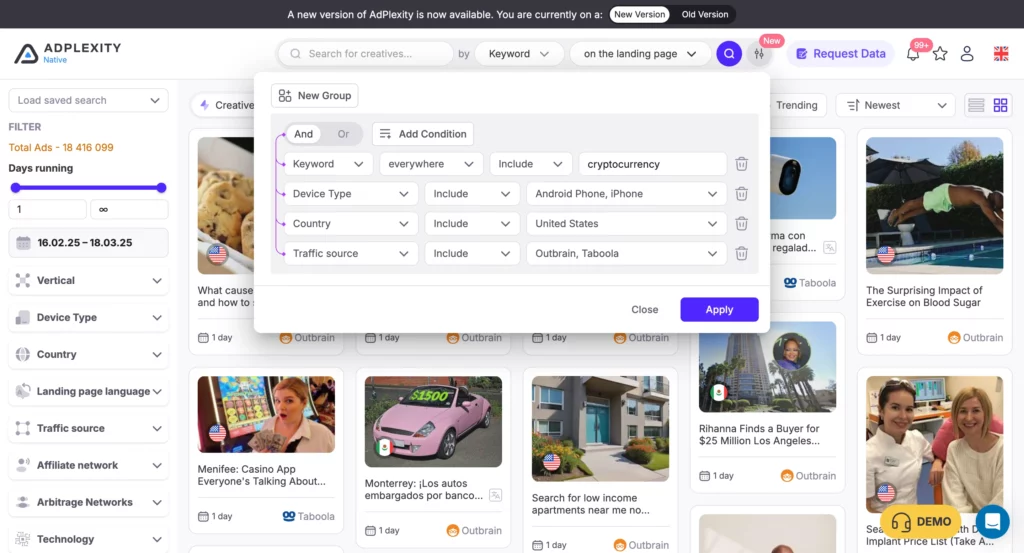
As demonstrated above, we use Adplexity’s advanced filters to narrow our results for the best accuracy.
Adding the keyword ‘cryptocurrency,’ choosing Android and iPhone as device types, pinpointing the country to the USA, and setting traffic sources to Outbrain and Taboola, we can see the most suitable and highest-performing native ads for this market.
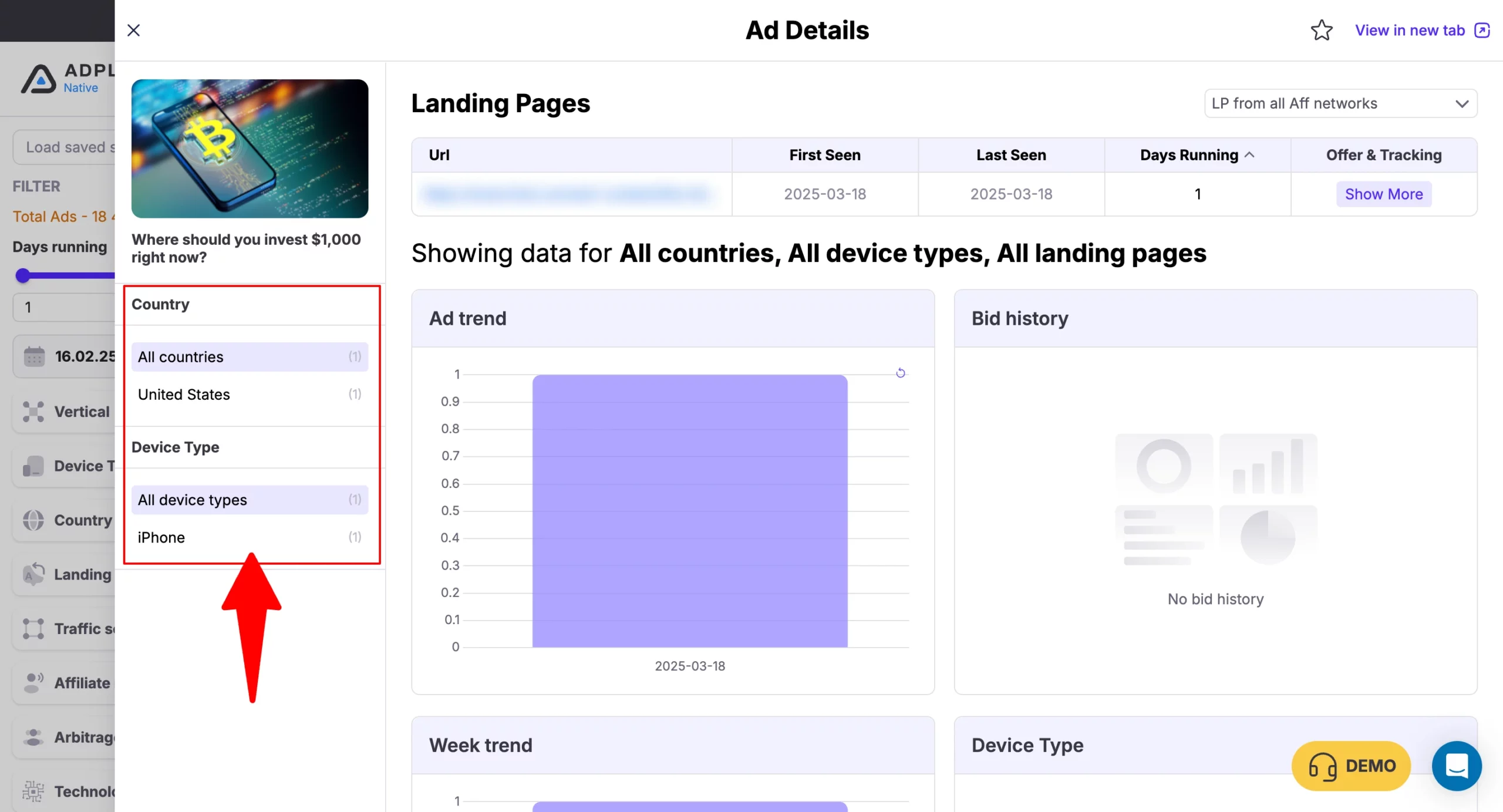 Adplexity stands out as the leading native ad spy tool in the industry, offering unparalleled insights to help advertisers optimize their campaigns and stay ahead of the competition.
Adplexity stands out as the leading native ad spy tool in the industry, offering unparalleled insights to help advertisers optimize their campaigns and stay ahead of the competition.
2. Lead Generation: Insurance & Mortgage Native Ads
Native ads are employed within lead generation campaigns to drive users interested in insurance and mortgages. As demonstrated below, we used Adplexity’s advanced filters this time to narrow down our search further.
We added two groups of keywords, ‘mortgage’ and ‘insurance’, to capture a wider but focused set of results.
Secondly, we set up another group of filters to target desktop devices, Mac, Windows, etc.
Finally, we filtered the traffic sources by choosing arbitrage networks like Clicksco, DomainActive, etc.
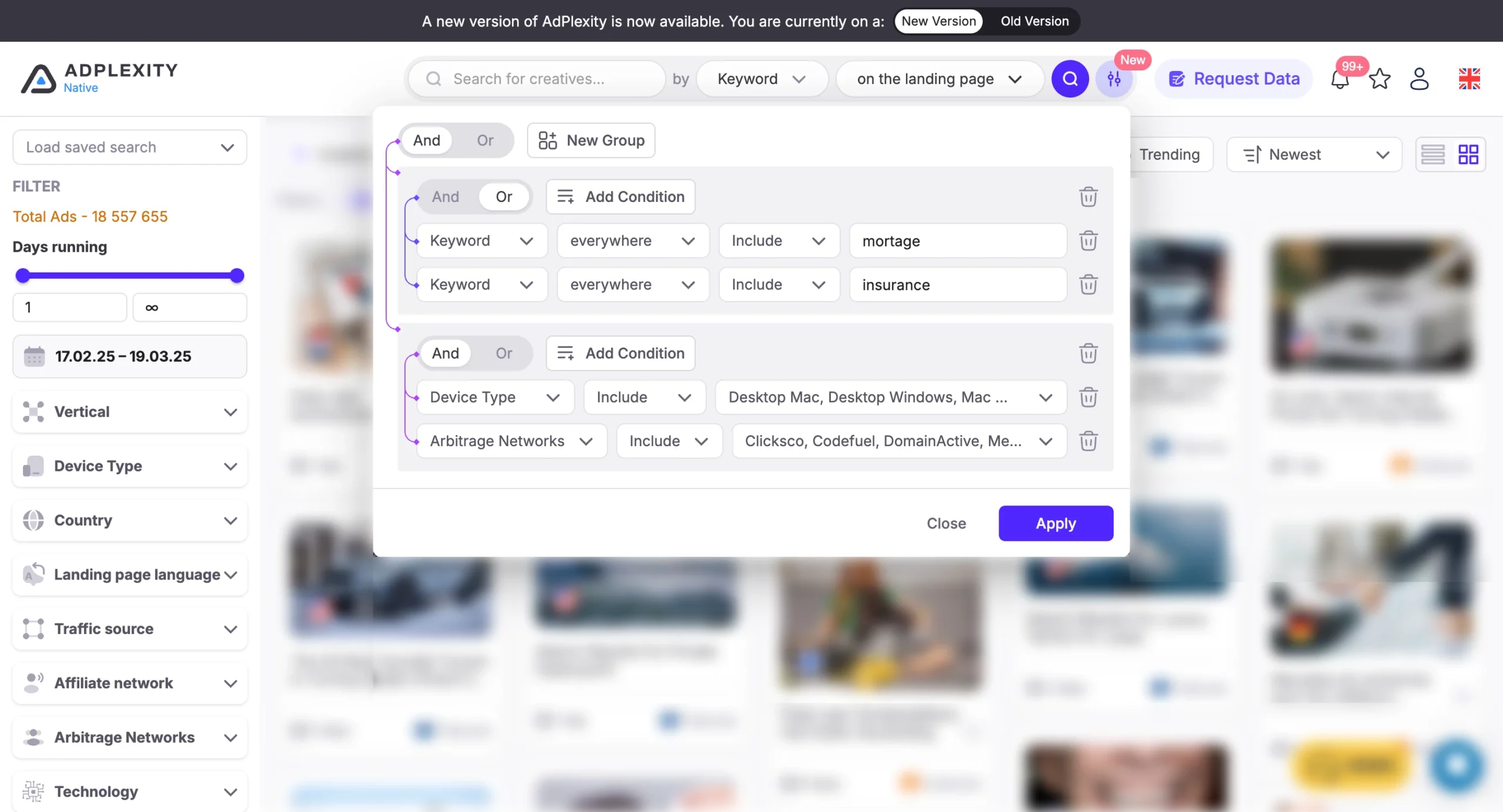
The top result we got from our search.
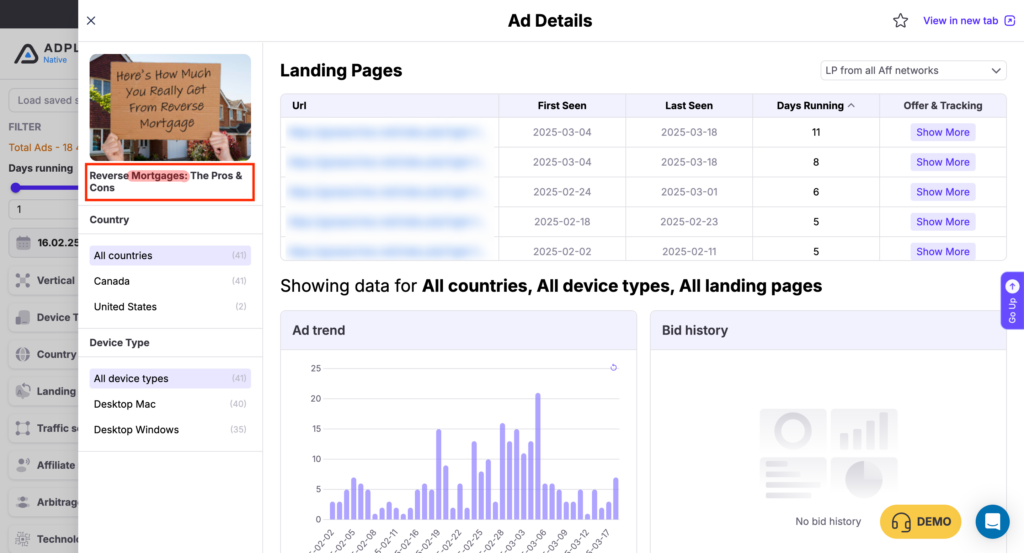
Here is the top result for “Insurance” keyword along with the countries we set as a parameter and Arbitrage Networks.
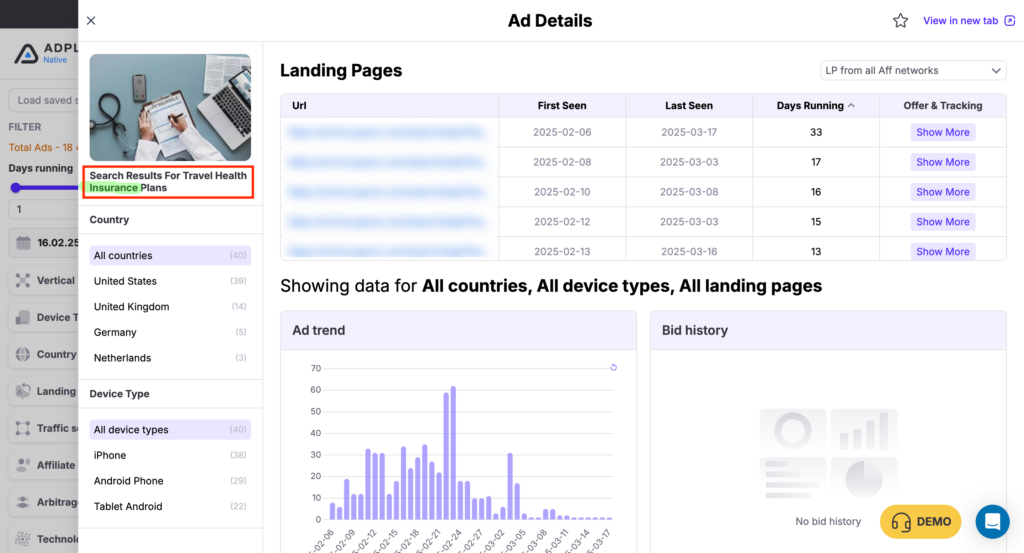 3. Weight Loss Native Ads
3. Weight Loss Native Ads
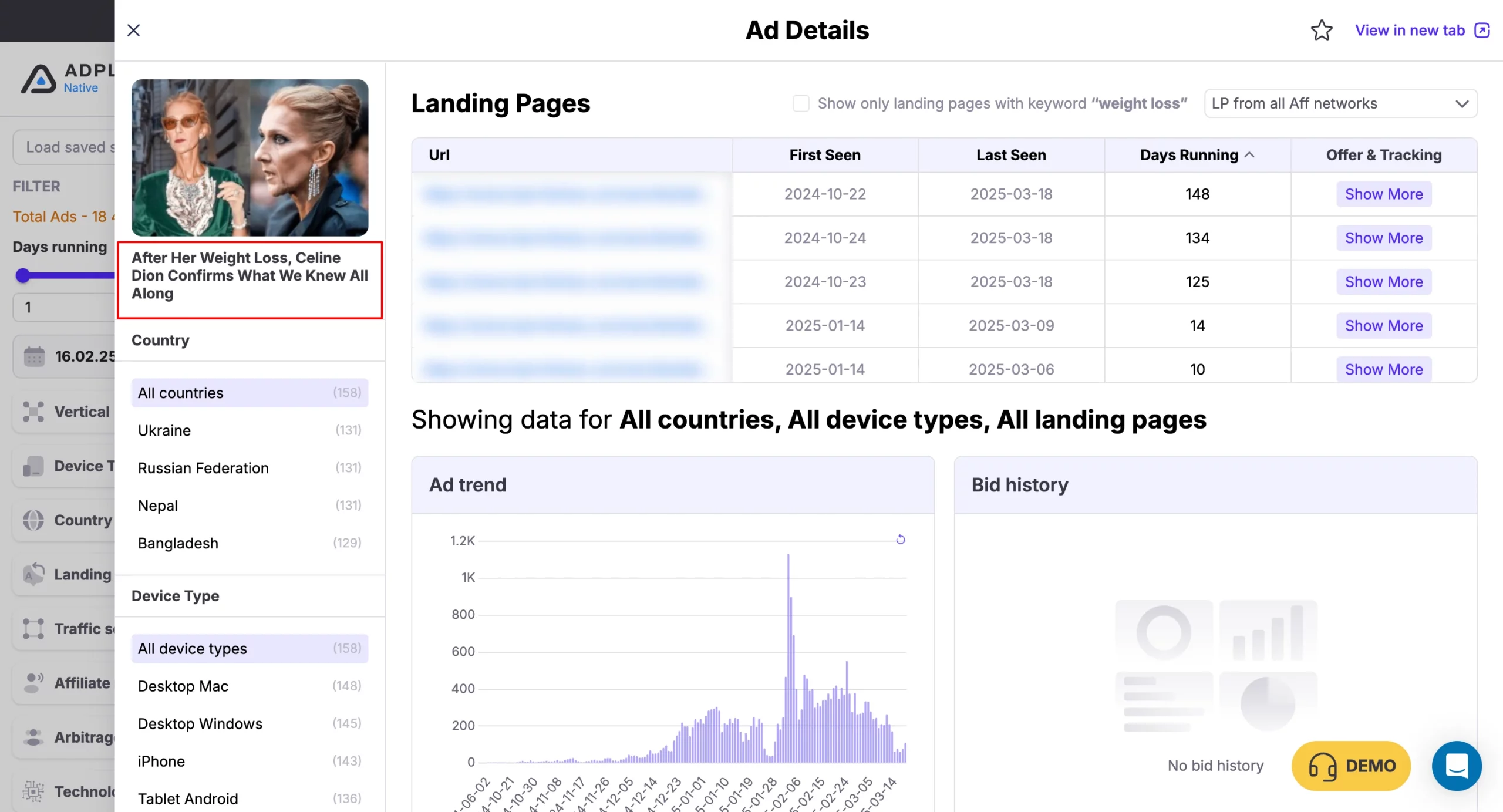
Native Advertising Implementation Steps
Step 1: Define Your Goals and Metrics
Before creating native ad campaigns, clearly establish:
- Primary campaign objective (awareness, engagement, conversions)
- Key performance indicators (KPIs)
- Target cost per acquisition (CPA) or return on ad spend (ROAS)
- Attribution model for tracking results
Step 2: Research Your Platform and Audience
Successful native advertising depends on understanding:
- The platform’s unique content style and user expectations
- Your audience’s content consumption habits on that platform
- The types of native formats available and their performance benchmarks
- Competitor approaches on the same platform
Step 3: Create Platform-Appropriate Content
Develop content that:
- Matches the platform’s typical formatting, tone, and quality standards
- Provides genuine value independent of your promotional message
- Addresses specific audience interests or pain points
- Incorporates your brand message in a natural, non-disruptive way
Step 4: Optimize for Engagement
Maximize performance by:
- Testing multiple headlines (at least 5 variations)
- Experimenting with different images and visual approaches
- A/B testing call-to-action phrasing and placement
- Refining targeting parameters based on initial performance data
Step 5: Scale What Works
Once you identify successful approaches:
- Increase budget allocation to top-performing placements
- Expand to additional publishers with similar audience profiles
- Create variations of successful content themes
- Develop a content calendar based on performance patterns
- Optimize landing page experiences using a no-code landing page builder like Landerlab to increase conversion rates from native ad traffic
10 Native Advertising Best Practices for 2025
- Be transparent: Always label native content as sponsored, even if it makes it appear less “native.” Research has demonstrated that front-end labeling actually increases trust and engagement over the long term.
- Match the quality of the platform: Native ads should be as good as the content surrounding them. Low-quality content hurts your brand and the publisher’s reputation.
- Prioritize mobile-first experiences: With 68% of native ad impressions on mobile, optimize for small screens and mobile-sized attention spans.
- Leverage data for personalization: Use first-party data to create personalized native experiences that speak directly to specific user segments
- Harness data to personalize: Use first-party data to fuel personal, native experiences that target known user segments in real time.
- Utilize video strategically: Native video commercials are 6x more captivating than regular pre-roll commercials. Where possible, include video units that play automatically, silently and attract attention within the first 3 seconds
- Experiment with several native formats: Avoid using just a single native advertisement format. Test in-feed ads, recommendation widgets, and sponsored content to determine what will work best for your unique goals.
- Create platform-native content: Resist the urge to copy-paste content from one platform to another. Each platform’s native ads generate 30-50% better performance than standard content.
- Shareability is key: The best-performing native ads are shared organically. Add shocking facts, emotional content, or functional utility to boost the sharing quotient.
- Test and iterate repeatedly: The most successful native advertisers always improve their method, trying new headlines, photos, and methods with A/B testing tools.
Common Native Advertising Mistakes to Avoid
- ❌ Misleading Clickbait: Undermines brand trust and damages publisher partnerships.
- ❌ Ignoring Platform Context: Misaligned design or tone leads to low engagement.
- ❌ Overselling the Brand: Hard-sell tactics repel modern consumers focus on value first.
- ❌ Skipping Mobile Optimization: Mobile users dominate; don’t ignore them.
- ❌ Inadequate Disclosure: Lack of transparency damages trust and may violate advertising policies.
- ❌ Targeting the Wrong Audience: Poor targeting wastes budget and affects brand perception.
- ❌ Insufficient A/B Testing: Without testing variations, you’re flying blind.
- ❌ Forgetting the User Journey: Disconnected content fails to guide users toward conversion goals.
Native Advertising Tools and Resources
Native Ad Networks and Platforms
- Taboola
- Outbrain
- RevContent
- MGID
- Nativo
Native Advertising Tools and Resources
Native ad networks and spy tools are essential for analyzing and learning from successful campaigns across various platforms. These tools help you:
- Monitor competitors’ native ad strategies
- Identify top-performing publishers and content types in your niche
- Analyze headline templates, imagery, and content approaches that drive engagement
- Understand campaign duration and performance trends
While native ad spy tools provide useful insights, remember to learn about the principles of successful campaigns rather than simply emulating strategies.
Successful native advertising combines competitive intelligence with your brand voice and value proposition.
The most important functionalities of native ad research tools are:
- Advanced search filters: Search ads by keyword, niche, or ad type
- Geos & device filtering: View what ads are working in a particular country or on devices
- Traffic source breakdown: Know where traffic is originating
- Affiliate network insight: Determine which affiliate networks are employed by successful campaigns
- Landing page analysis: Monitor successful sales funnels
Conclusion
Native advertising is a revolutionary change in the way brands speak to consumers.
As opposed to historical approaches that interrupt user experiences, native ads are born into content and offer value without interruption.
When consumers have been conditioned to ignore traditional ads, native advertising provides a means to cut through the noise by emphasizing relevance and authenticity.
The highest-performing native ad campaigns don’t sell something; they build relationships.
They:
- Put the user at the center and provide real value
- Respect the environment of the platform and adapt to its content
- Use data to create personalized, targeted messages
- Are transparent and build trust with consumers
- Test and optimize for improved performance on a continuous basis
Through these principles, brands can be successful in the short run and form lasting bonds with their public. In an increasingly competitive marketplace, native advertising is no longer a strategy; it’s a key to long-term success.
